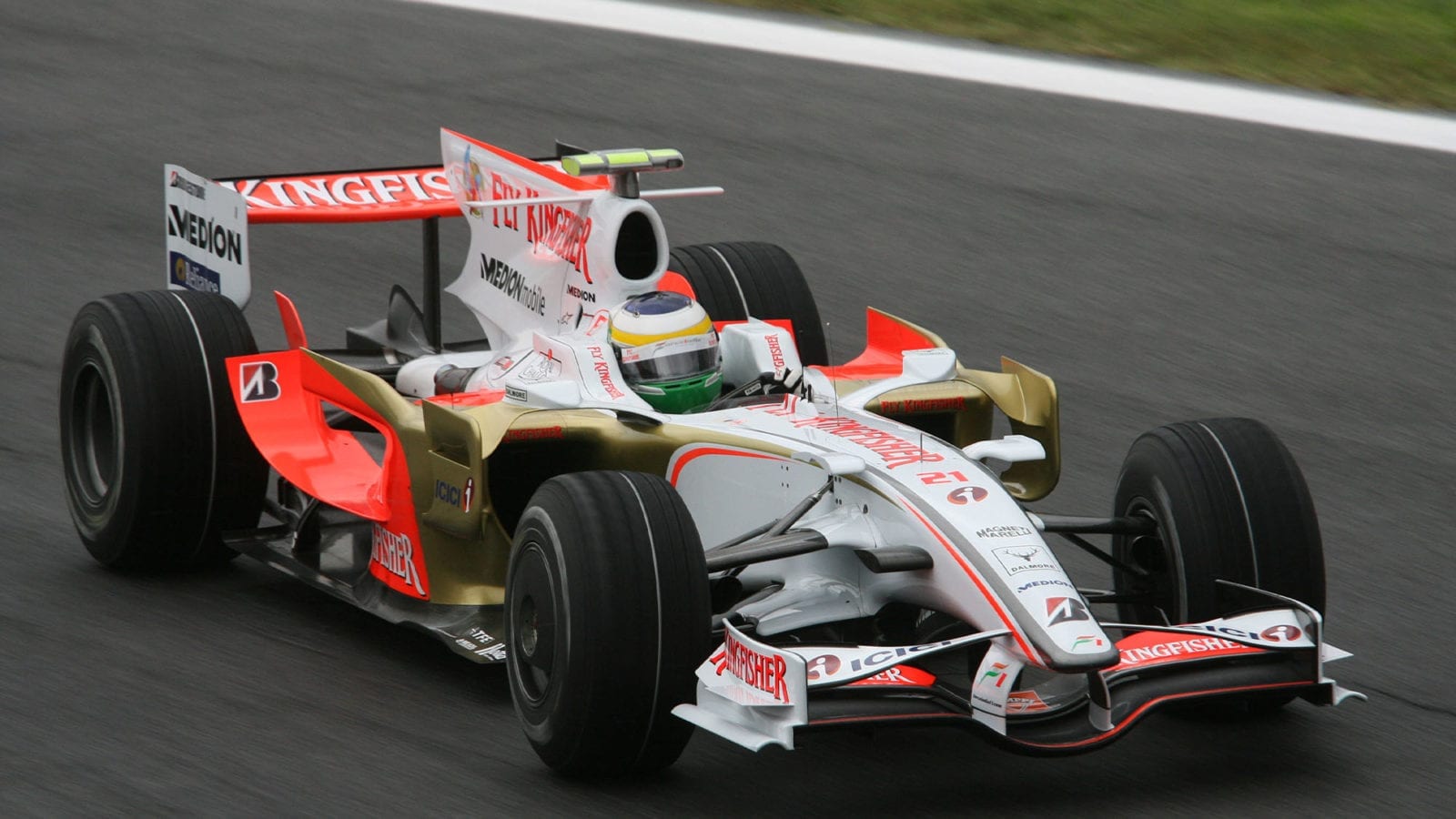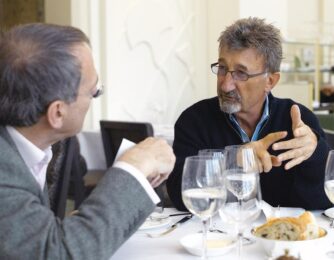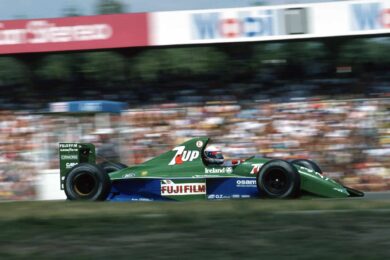“I remember racing on an old airfield at Chennai. There were bamboo grandstands and 75,000 people turned up to watch – bloody incredible! So I guess the passion, the spirit, had always been there for racing in India but it had never been unleashed until the early 1980s. This was well before the Madras Motor Sports Trust built a permanent circuit and held the Madras Grand Prix for Formula 3 cars. You have to realise that very few people could afford to go racing, the import duties on cars were prohibitive, and so racing took off very slowly. India was nowhere near the booming economy that she is today – motor racing was just too expensive. But there has been a huge liberalisation of the economy, duties have come right down, and young people are buying sports cars and racing cars right, left and centre. Can you imagine, Lamborghini is now established in India – I mean, I am driving through the Bombay traffic in my Merc at 20kph and there are young people in their Ferraris, Porsches and Lamborghinis stuck in this traffic. Crazy, incredible.”
Mallya is not new to Grand Prix racing. He was a sponsor at Benetton in 1995, with his Kingfisher beer brand, and more recently at Toyota, so he knows a thing or two about pouring his cash into what is considered by many to be a notoriously bottomless pit.
“Yes, I am seeing Formula 1 from both sides, as a sponsor and now as a team owner,” he says, peering over the top of his red designer spectacles. “At Benetton I learnt a lot from Flavio Briatore, watched how he ran his business, and I am using a lot of that knowledge in Force India. I’ve made it clear that while there isn’t money to throw around, there will be the money for investing in the right people and in the very best equipment and technology. Already we’re running two wind tunnels, one of them at AeroLab in Italy and the other at Brackley, both running 24/7 with half-scale models, and this is something the team has not had in the past.
“Look,” he continues, “I have people in my businesses who know how I operate, know what I expect, and it will be the same with Force India. It will be the same approach as with Kingfisher, the beer and the airline, in that I will spend time getting it right, making it work and making it a desirable product for sponsors.
“I have already had Indian businessmen wanting to take a share. They know what this will do for India, the potential of putting these cars in front of hundreds of millions of eyeballs in a country which is developing very fast and which has a huge middle class earning, and wanting to spend, good money. We established Kingfisher as an international brand with our sponsorship at Toyota, using F1 as a platform for launching promotional programmes for the business within India. At that time I was not even considering buying my own team. Even a year ago it just wasn’t on my radar.”
“There’s not going to be Indianisation at the cost of professionalism.”
Mallya has called his team Force India Formula One, something of a mouthful for commentators, but all part of his strategy to build awareness of his booming business empire on the subcontinent. But the team will remain in England and rely on proven skills.
“Look, there’s not going to be Indianisation at the cost of professionalism,” he says firmly. “I want the best professionals and that’s precisely why I am conducting such extensive driver testing at the moment. Before, you paid to drive a Spyker; now you will not pay to drive at Force India. You’re either good or you’re no good, that’s it. I will retain [Adrian] Sutil because I believe in him and that he has the talent. The other seat is not for sale, we’ll put the best driver we can in there and we are testing Ralf Schumacher, Giancarlo Fisichella, Vitantonio Liuzzi, Franck Montagny and Christian Klien.That’s the proper way to go about getting the best we can.”
Word is that Klien has impressed and that the Austrian goes into the Christmas break as the favourite to race alongside his compatriot next season.
“We’ve already squeezed half a second out of the car by having these drivers test for us, simply because they’ve driven other cars and they’ve brought some improvements from their experience of quicker cars. Of course it won’t be Fernando Alonso driving,” he laughs [not now, anyway! – Ed], “ I need to learn to walk before I run – and I’ve learnt that in business as well. We will do things properly, there will be a robust budget, the team has cash in the bank, and I have given Mike Gascoyne [the technical director] a pretty free hand, all the resources he needs. And then of course I will leverage my connections with Airbus – I am one of their biggest customers with the new airline – and they will help us with CFD development. They know a bit about aerodynamics, and then there’s their super-computing power.



